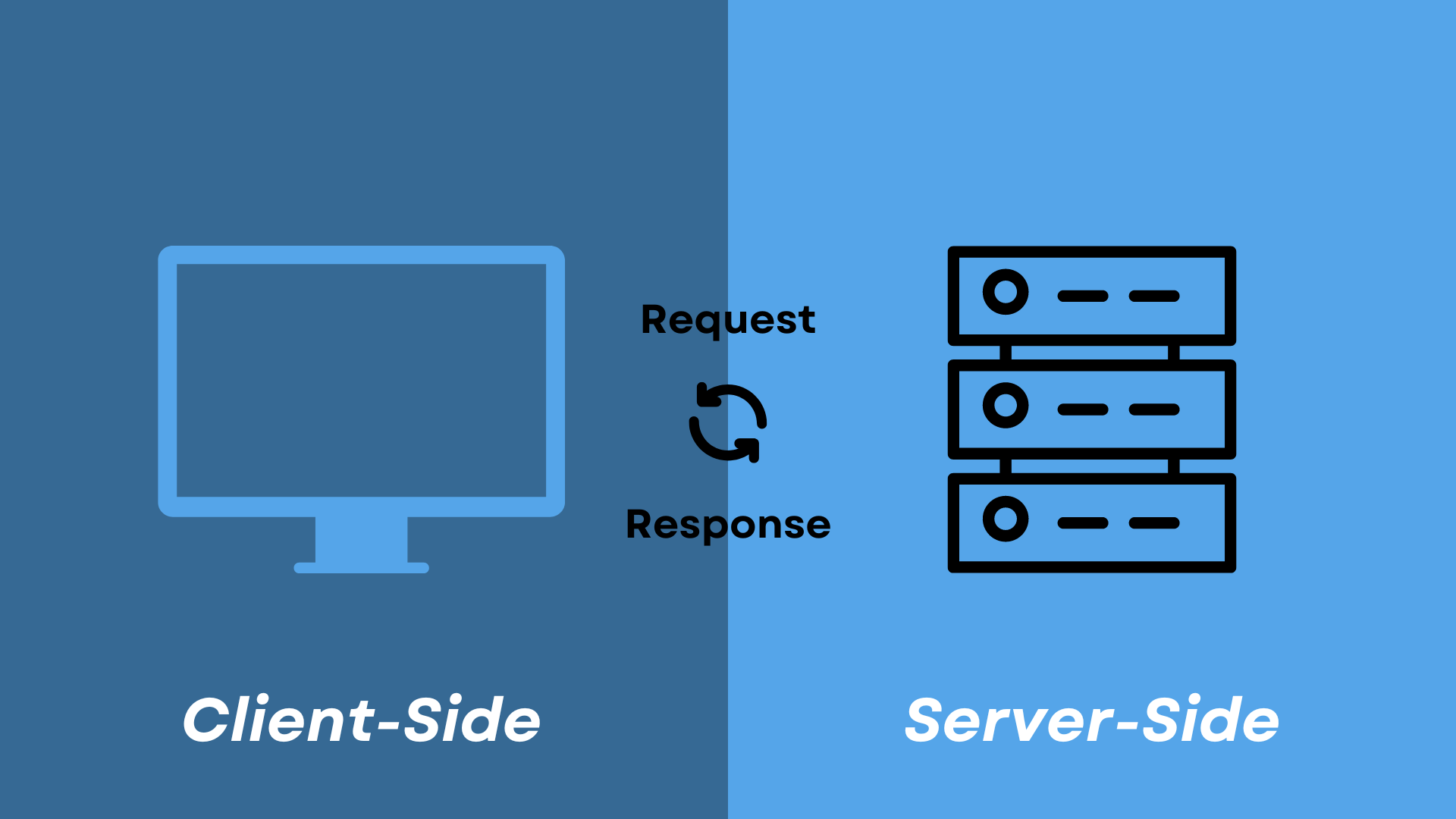What is Client-side and Server-side Engineering
Client-side computers are responsible for making requests for information, while server-side systems fulfill these requests. In the context of the internet, client computers include devices like mobile phones, laptops, desktops, and tablets. For example, when you visit websites such as YouTube, your device sends requests to YouTube's servers. In this scenario, you, as the user, are the client because your web browser queries YouTube's servers to access videos and web content. The server computers respond by providing the requested information, enabling you to browse and watch videos smoothly.

Client-side vs Server-side
Client-side
Client-side or front-end web developers harness their programming skills to craft visually appealing websites that cater to user experiences. Their responsibilities encompass designing and constructing elements like homepages, shopping pages, and interactive slideshows. These professionals focus on optimizing the user interface and overall design to ensure seamless and engaging interactions for website visitors.
-
Client side makes use of the following scripting languages:
- CSS
- HTML
- JavaScript
Server-side
Server-side or back-end developers are tasked with conceptualizing, designing, and overseeing the server-side code that facilitates data exchange within web applications. Proficient in languages like Python, PHP, and Java, these developers concentrate on safeguarding visitors' data privacy while also ensuring the smooth and uninterrupted operation of websites. Their expertise lies in managing the behind-the-scenes functionality that enables dynamic interactions, database management, and the seamless functioning of web applications.
-
Sever-side makes use of the following coding languages:
- PHP
- Java
- C#